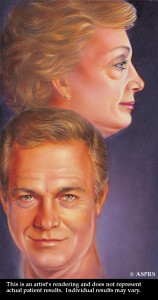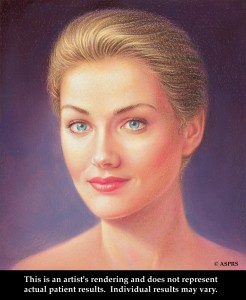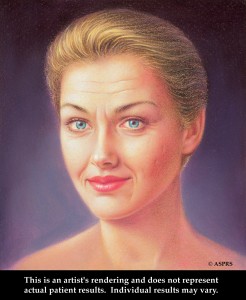The face is a structure in three dimensions. In considering rejuvenation of the face, one should start from the outer surface and work towards the deeper structures. The first thing to consider is changes in the skin. Skin changes can occur early in life and are affected by both genetic and environmental factors. Sun exposure in youth, smoking, diet and pollution all have cumulative effects on the skin that may cause scaling, changes in pigmentation, red patches and eventually wrinkles. Skin care should begin early with the application of sunscreens and other agents, depending on the skin type, along with routine skin hygiene. Dry skin requires hydrating agents while more oily, acne-prone skin require agents that equilibrate the activity of the skin glands. Topical agents that may be used to give smoother skin include topical vitamins (C, E and A), vitamin-A acids, alpha-hydroxy acids and beta hydroxy acids. Other agents such as hydroquinones may be used to remove pigmented patches. These agents come in differing strengths and your plastic surgeon should determine the proper formula after a thorough history and physical exam. These agents may be used at home and they tend to affect the upper layers of the skin.
For deeper layers of skin, more aggressive treatment is required. A higher strength vitamin-A acid may be used with good results in mild cases and may even remove fine wrinkles. However, for more dramatic changes, a controlled burn must be used in the form of a chemical peel or laser. Excellent skin rejuvenation results are obtained with these modalities. They are, however, not good for darker skinned patients or patients who like to tan since they may cause permanent depigmentation by knocking out the cells responsible for skin pigmentation. There are also several weeks of downtime whereby the patient must apply topical therapy to the burns while they are healing. There are newer lasers that can treat the deeper layers of the skin while bypassing the upper layers. This allows one to come to the office, get a laser treatment and return to work with no noticeable changes. The skin changes with this modality are very subtle at best and so gradual that it may take 4 to 5 months to manifest.
Once the skin has been addressed, there are signs of facial aging that cannot be treated with topical therapy alone; brow and eyelid sagging, jowls and neckline must all be treated with surgery. These changes are also due to genetic and environmental factors, the end result being a gradual descent of the soft tissues of the face along with changes of bony structures with age.
The brow may be lifted using endoscopic instruments that minimize the scars associated with traditional forehead lifts. A series of small incisions is made within the scalp and delicate instruments are introduced through these incisions along with a small endoscopic camera. The procedure is done with the aid of a video monitor to view the images projected by the endoscopic camera. Very fine detail can be seen with this system and the muscles that cause brow depression can be treated in this way while avoiding the nerves that give sensation to the forehead.
Eyelids generally require skin resection and treatment of herniated fat pockets that surround the orbit. For upper lids, the incisions are hidden in a natural crease. The lower lid incision is placed just below the lashes. A well-trained accredited plastic surgeon will be able to place these incisions in areas that will cause the scars to be extremely well hidden. The procedure may be performed easily under local anaesthesia.


The mid-face and neck also require skin resection in most patients. An incision is placed in front of and behind the ear and becomes nearly imperceptible to the casual observer. Once the skin is lifted off the deeper structures of the face, the muscles are sutured to a higher position in order to treat the nasolabial folds and jowls. A tighter neckline is also obtained by manipulation of the muscles. The skin is then placed back on top of the muscles and the excess skin is removed. This procedure may be performed with local anaesthesia and sedation or with general anaesthesia. Recovery time is generally about 2 to 3 weeks.
There are of course certain risks involved with any surgery and those should be discussed with your surgeon. In general, however, there are few problems and the patients leave the office with a sense of pride and great satisfaction.


